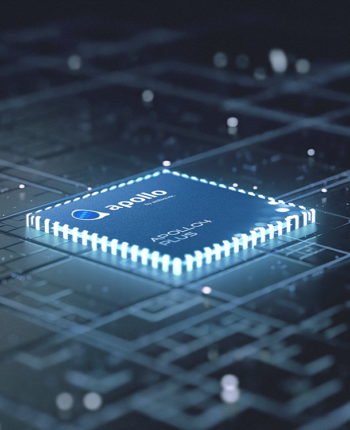The 5-Second Trick For Ambiq apollo3 blue
The 5-Second Trick For Ambiq apollo3 blue
Blog Article

This real-time model analyzes the sign from just one-lead ECG sensor to classify beats and detect irregular heartbeats ('AFIB arrhythmia'). The model is created to have the ability to detect other sorts of anomalies for example atrial flutter, and may be consistently extended and improved.
Generative models are One of the more promising methods in direction of this objective. To educate a generative model we to start with collect a great deal of facts in some domain (e.
Prompt: A litter of golden retriever puppies actively playing in the snow. Their heads pop out with the snow, lined in.
Prompt: Drone perspective of waves crashing from the rugged cliffs along Massive Sur’s garay place Beach front. The crashing blue waters build white-tipped waves, though the golden mild with the location Sunlight illuminates the rocky shore. A little island having a lighthouse sits in the space, and inexperienced shrubbery addresses the cliff’s edge.
Our network is a function with parameters θ \theta θ, and tweaking these parameters will tweak the produced distribution of photos. Our target then is to discover parameters θ \theta θ that develop a distribution that carefully matches the accurate data distribution (for example, by aquiring a compact KL divergence reduction). For that reason, it is possible to consider the environmentally friendly distribution starting out random and afterwards the instruction process iteratively altering the parameters θ \theta θ to extend and squeeze it to higher match the blue distribution.
They may be fantastic find concealed styles and organizing similar points into teams. They can be found in apps that help in sorting factors including in advice units and clustering jobs.
One among our core aspirations at OpenAI is usually to produce algorithms and approaches that endow desktops with the understanding of our environment.
The library is can be employed in two strategies: the developer can select one of the predefined optimized power configurations (defined right here), or can specify their own like so:
There is another Pal, like your mother and Instructor, who never ever are unsuccessful you when needed. Fantastic for problems that require numerical prediction.
Model Authenticity: Customers can sniff out inauthentic written content a mile absent. Building belief involves actively Studying about your viewers and reflecting their values in your material.
Also, by leveraging really-customizable configurations, SleepKit can be used to generate personalized workflows for the specified application with nominal coding. Refer to the Quickstart to swiftly stand up and operating in minutes.
Instruction scripts that specify the model architecture, train the model, and in some cases, carry out coaching-conscious model compression for instance quantization and pruning
Therefore, the model is ready to Keep to the consumer’s textual content Guidelines inside the generated online video a lot more faithfully.
Specifically, a small recurrent neural network is used to find out a denoising mask that's multiplied with the initial noisy input to create denoised output.
Accelerating the Development of Optimized AI Features with Ambiq’s neuralSPOT
Ambiq’s neuralSPOT® is an open-source AI developer-focused SDK designed for our latest Apollo4 Plus system-on-chip (SoC) family. neuralSPOT energy harvesting design provides an on-ramp to the rapid development of AI features for our customers’ AI applications and products. Included with neuralSPOT are Ambiq-optimized libraries, tools, and examples to help jumpstart AI-focused applications.
UNDERSTANDING NEURALSPOT VIA THE BASIC TENSORFLOW EXAMPLE
Often, the best way to ramp up on a new software library is through a comprehensive example – this is why neuralSPOt includes basic_tf_stub, an illustrative example that leverages many of neuralSPOT’s features.
In this article, we walk through the example block-by-block, using it as a guide to building AI features using neuralSPOT.
Ambiq's Vice President of Artificial Intelligence, Carlos Morales, went on CNBC Street Signs Asia to discuss the power consumption of AI and trends in endpoint devices.
Since 2010, Ambiq has been a leader in ultra-low power semiconductors that enable endpoint devices with more data-driven and AI-capable features while dropping the energy requirements up to 10X lower. They do this with the patented Subthreshold Power Optimized Technology (SPOT ®) platform.
Computer inferencing is complex, and for endpoint AI to become practical, these devices have to drop from megawatts of power to microwatts. This is where Ambiq has the power to change industries such as healthcare, agriculture, and Industrial IoT.
Ambiq Designs Low-Power for Next Gen Endpoint Devices
Ambiq’s VP of Architecture and Product Planning, Dan Cermak, joins the ipXchange team at CES to discuss how manufacturers can improve their products with ultra-low power. As technology becomes more sophisticated, energy consumption continues to grow. Here Dan outlines how Ambiq stays ahead of the curve by planning for energy requirements 5 years in advance.
Ambiq’s VP of Architecture and Product Planning at Embedded World 2024
Ambiq specializes in ultra-low-power SoC's designed to make intelligent battery-powered endpoint solutions a reality. These days, just about every endpoint device incorporates AI features, including anomaly detection, speech-driven user interfaces, audio event detection and classification, and health monitoring.
Ambiq's ultra low power, high-performance platforms are ideal for implementing this class of AI features, and we at Ambiq are dedicated to making implementation as easy as possible by offering open-source developer-centric toolkits, software libraries, and reference models to accelerate AI feature development.

NEURALSPOT - BECAUSE AI IS HARD ENOUGH
neuralSPOT is an AI developer-focused SDK in the true sense of the word: it includes everything you need to get your AI model onto Ambiq’s platform. You’ll find libraries for talking to sensors, managing SoC peripherals, and controlling power and memory configurations, along with tools for easily debugging your model from your laptop or PC, and examples that tie it all together.
Facebook | Linkedin | Twitter | YouTube Report this page